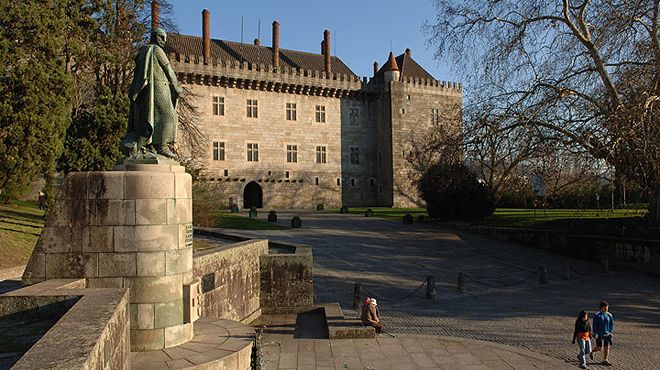Paço dos Duques de Bragança

Museums and Palaces
The construction of the palace of the Dukes of Bragança, its design inspired by that of the typical French manor houses, was begun in the early 15th century. It was commissioned by D. Afonso de Barcelos, the first duke of Bragança and the bastard son of D. João, Master of Avis, the future king D. João I. Because the residence of the Dukes of Bragança was later moved to the Palace of Vila Viçosa, in the Alentejo, the building gradually fell into disrepair over the centuries until it was transformed into a military barracks in 1807.
In 1937, restoration work was begun on the building and on 24 June 1959, exactly 831 years after the Battle of São Mamede, the palace was brought back to life in all its Norman-inspired Gothic glory. On the ground floor in the north wing is a small museum of contemporary art, which houses pieces given to the city of his birth by the painter José de Guimarães (the artist who created Portugal´s tourism symbol).
The museum occupies the huge rooms of the first floor, being used for exhibiting a group of works of art originating from various museums or commissioned as replicas, most notably a number of pieces of 17th-century furniture, collections of ancient weapons and a remarkable group of four enormous tapestries depicting in great detail scenes from the arrival of the Portuguese in Arzila, the siege of this same city in North Africa and the capture of Tangiers. The originals were found in Pastrana, close to Madrid, and later transferred to the El Escorial palace. The Spanish government never gave permission for the original tapestries to be returned to Portugal, only allowing reproductions to be made, and these are now on display at the Ducal Palace.
4800-412 Guimarães
10.00 a.m.-6.00p.m. (last ticket 5.30 p.m.)
Closed: 1 January, Easter, 1 May and 25 December
- Total
- Total
- Total
- Shop
- Bar/Café
- Toilets
- Information panels
- Key
- Interative and audiovisual presentations
- Items for tactile exploration
- Visual impairment
- Hearing impairment
















 Explore
Explore 
 Remember and Share
Remember and Share 


